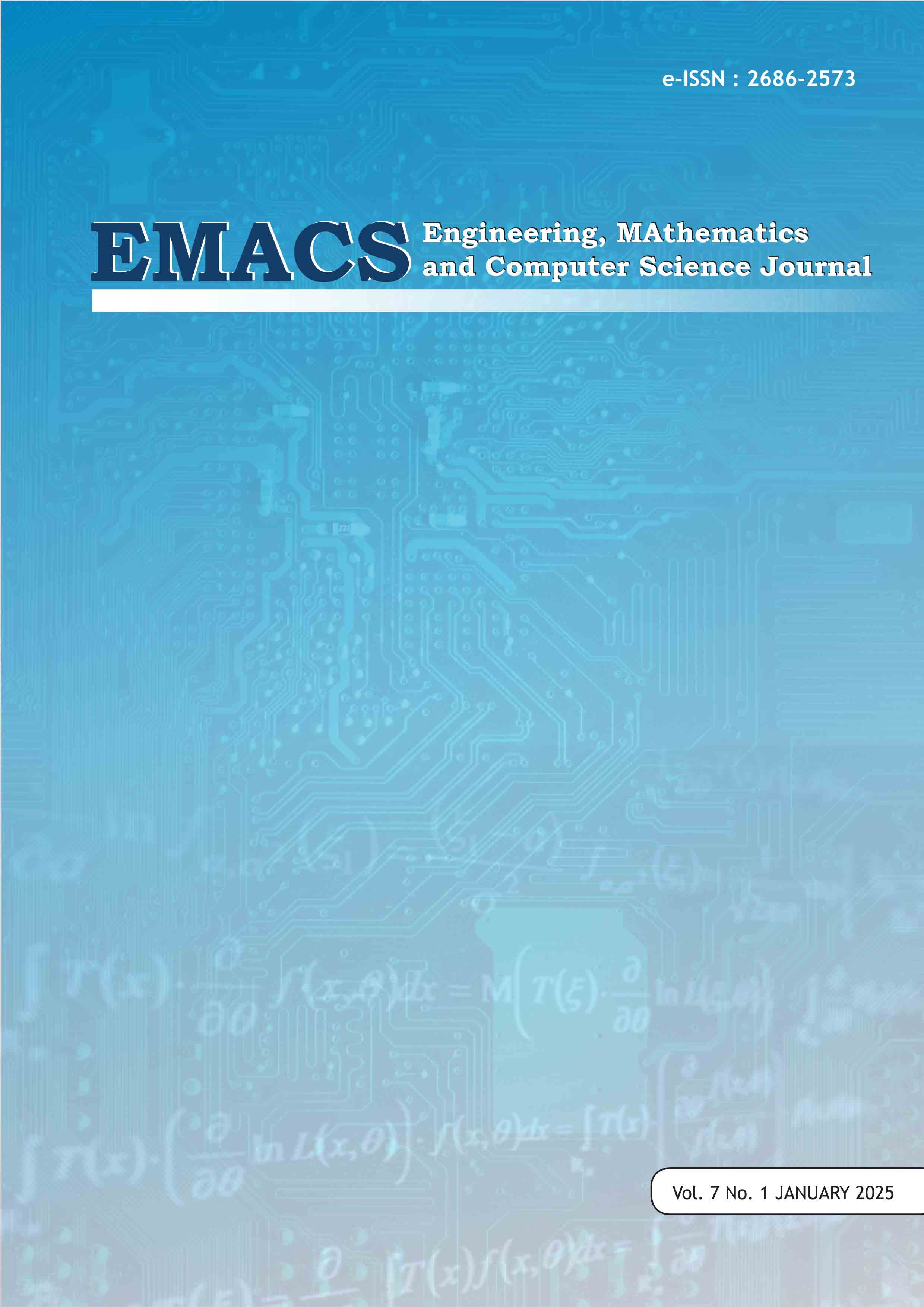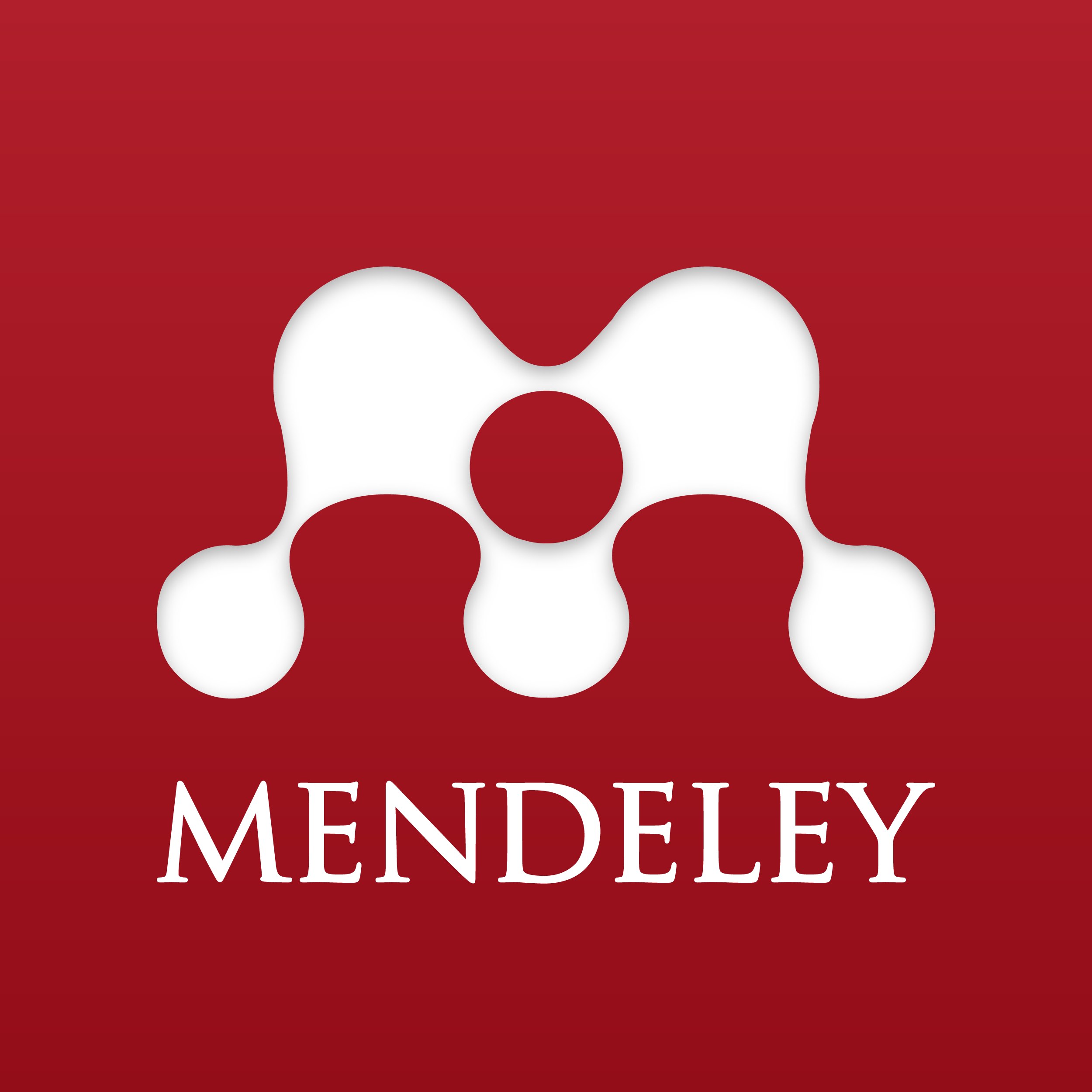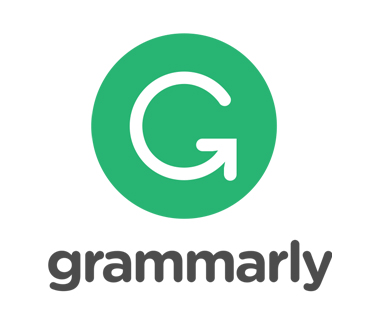Unlocking Pharma Market Segmentation for Strategic Growth Through Advanced Data Intelligence
DOI:
https://doi.org/10.21512/emacsjournal.v7i1.12199Keywords:
Clustering, Customer Profiling, Elbow, K-Means, Pharmaceutical Market, SegmentationAbstract
Business competition compels companies to understand customer characteristics in order to maintain and enhance their competitiveness, especially in the pharmaceutical industry, which involves various customer segments such as hospitals, pharmacies, patients, and end consumers with diverse needs. Customer segmentation becomes crucial in developing effective strategies, with K-Means algorithm being one of the commonly used methods due to its simplicity and efficiency in clustering large datasets. This study combines the K-Means Clustering algorithm with the elbow method to determine the optimal number of clusters in segmenting the customer profiles of a pharmaceutical company. The analysis results reveal two main clusters: the first cluster is dominated by hospitals with higher medication purchase volumes and longer delivery distances, ranging from 8 to 131 km, while the second cluster is dominated by pharmacies with smaller purchase volumes and shorter delivery distances. These findings enable the pharmaceutical company to better understand customer characteristics and design more effective strategies to compete in the market. It is recommended that the company adjusts its marketing strategies and products based on the needs of each cluster, enhances customer relationships through loyalty programs, and optimizes distribution routes to improve operational efficiency.
References
Alifah, A. N., Fadhilah, H. N., & Sianipar, T. M. (2022). Klasterisasi KabupatenKota di Jawa Barat Berdasarkan Tingkat Kenyamanan dengan Metode K-Means Clustering. PROSIDING SEMINAR NASIONAL SAINS DATA, 2(1), 30–38.
Febriani, A., & Putri, S. A. (2020). Segmentasi Konsumen Berdasarkan Model Recency, Frequency, Monetary dengan Metode K-Means. JIEMS (Journal of Industrial Engineering and Management Systems), 13(2). https://doi.org/10.30813/jiems.v13i2.2274
Febrianty, E., Awalina, L., & Rahayu, W. I. (2023). Optimalisasi Strategi Pemasaran dengan Segmentasi Pelanggan Menggunakan Penerapan K-Means Clustering pada Transaksi Online Retail Optimizing Marketing Strategies with Customer Segmentation Using K-Means Clustering on Online Retail Transactions. Jurnal Teknologi Dan Informasi (JATI), 13. https://doi.org/10.34010/jati.v13i2
Ika Murpratiwi, S., Gusti Agung Indrawan, I., & Aranta, A. (2021). ANALISIS PEMILIHAN CLUSTER OPTIMAL DALAM SEGMENTASI PELANGGAN TOKO RETAIL. Jurnal Pendidikan Teknologi Dan Kejuruan, 18(2).
Januzaj, Y., Beqiri, E., & Luma, A. (2023). Determining the Optimal Number of Clusters using Silhouette Score as a Data Mining Technique. International Journal of Online & Biomedical Engineering, 19(4).
Khairati, A. F., Adlina, A. A., Hertono, G. F., & Handari, B. D. (2019). Kajian Indeks Validitas pada Algoritma K-Means Enhanced dan K-Means MMCA. PRISMA. Prosiding Seminar Nasional Matematika, 2, 161–170. https://journal.unnes.ac.id/sju/index.php/prisma/
Naghizadeh, A., & Metaxas, D. N. (2020). Condensed silhouette: An optimized filtering process for cluster selection in K-means. Procedia Computer Science, 176, 205–214. https://doi.org/10.1016/j.procs.2020.08.022
Pratamawati, M. H. S., Hidayat, T., Ibrahim, M., & Hartatik, S. (2021). Hubungan Minat Belajar dengan Prestasi Belajar Matematika Siswa di Sekolah Dasar. Jurnal Basicedu, 5(5), 3270–3278. https://doi.org/10.31004/basicedu.v5i5.1331
Ramadhan, A. G. (2023). How to cite: Ade Guntur Ramadhan (2023) Data Mining Untuk Segmentasi Pelanggan dengan Algoritma K-Means: Studi Kasus pada Data Pelanggan di Toko Retail DATA MINING UNTUK SEGMENTASI PELANGGAN DENGAN ALGORITMA K-MEANS: STUDI KASUS PADA DATA PELANGGAN DI TOKO RETAIL. 8(10). https://doi.org/10.36418/syntax-literate.v6i6
Sholeh, M., & Aeni, K. (2023). PERBANDINGAN EVALUASI METODE DAVIES BOULDIN, ELBOW DAN SILHOUETTE PADA MODEL CLUSTERING DENGAN MENGGUNAKAN ALGORITMA K MEANS. https://archive.ics.uci.edu/ml/datasets/Trave
Suharti, P. H., Suryandari, A. S., & Amalia, R. N. (2022a). ANALISIS KINERJA MODUL PENGENDALI TEKANAN UDARA PCT-14 BERBASIS PLC DENGAN BERBAGAI METODA TUNING. Sebatik, 26(2), 420–427. https://doi.org/10.46984/sebatik.v26i2.2134
Suharti, P. H., Suryandari, A. S., & Amalia, R. N. (2022b). ANALISIS KINERJA MODUL PENGENDALI TEKANAN UDARA PCT-14 BERBASIS PLC DENGAN BERBAGAI METODA TUNING. Sebatik, 26(2), 420–427. https://doi.org/10.46984/sebatik.v26i2.2134
Syahira, N., & Arianto, D. B. (2024). PREDIKSI TINGKAT KUALITAS UDARA DENGAN PENDEKATAN ALGORITMA K-NEAREST NEIGHBOR. Jurnal Ilmiah Informatika Komputer, 29(1), 45–59. https://doi.org/10.35760/ik.2024.v29i1.10069
Wibowo, A., Handoko, A. R., & Korespondensi, P. (2020). SEGMENTASI PELANGGAN RITEL PRODUK FARMASI OBAT MENGGUNAKAN METODE DATA MINING KLASTERISASI DENGAN ANALISIS RECENCY FREQUENCY MONETARY (RFM) TERMODIFIKASI SEGMENTATION OF CUSTOMERS OF DRUG PHARMACEUTICAL PRODUCT RETAIL USING CLASTERIZATION MINING DATA METHOD USING MODIFIED MONETARY RECENCY FREQUENCY (RFM) ANALYSIS. 7(3). https://doi.org/10.25126/jtiik.202072925
Wicaksana, R. S., Heksaputra, D., Syah, T. A., & Nur’aini, F. F. (2023). Pendekatan K-Means Clustering Metode Elbow Pada Analisis Motivasi Pengunjung Festival Halal JHF#2. Jurnal Ilmiah Ekonomi Islam, 9(3), 4162. https://doi.org/10.29040/jiei.v9i3.10591
Yuan, C., & Yang, H. (2019). Research on K-Value Selection Method of K-Means Clustering Algorithm. J, 2(2), 226–235. https://doi.org/10.3390/j2020016
Downloads
Published
How to Cite
Issue
Section
License
Copyright (c) 2025 Alfi Purwaningrum, Amalia Nur Alifah, Dwi Bagus Dermawan, Galuh Andini

This work is licensed under a Creative Commons Attribution-ShareAlike 4.0 International License.
Authors who publish with this journal agree to the following terms:
- Authors retain copyright and grant the journal right of first publication with the work simultaneously licensed under a Creative Commons Attribution License - Share Alike that allows others to share the work with an acknowledgment of the work's authorship and initial publication in this journal.
- Authors are able to enter into separate, additional contractual arrangements for the non-exclusive distribution of the journal's published version of the work (e.g., post it to an institutional repository or publish it in a book), with an acknowledgment of its initial publication in this journal.
- Authors are permitted and encouraged to post their work online (e.g., in institutional repositories or on their website) prior to and during the submission process, as it can lead to productive exchanges, as well as earlier and greater citation of published work.
USER RIGHTS
All articles published Open Access will be immediately and permanently free for everyone to read and download. We are continuously working with our author communities to select the best choice of license options, currently being defined for this journal as follows: Creative Commons Attribution-Share Alike (CC BY-SA)





